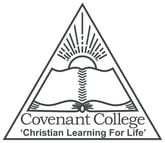 “I’ve too many good results here with a range of children to not give all the kids an opportunity to do it”.
“I’ve too many good results here with a range of children to not give all the kids an opportunity to do it”.
That's how Bruce Horman, Head of Junior School at Covenant College explained why he decided to have all children in Grade Three participate in the neuroscience-based Fast ForWord program in 2015.
Covenant College is a K -12 school with 540 students in Geelong, Victoria.
For the previous three years Covenant College had focussed the program on students from various grades who were presenting with a range of learning difficulties. They also included some students who were achieving in the mid range of their cohort, but had potential to do better.
Bruce commented, “I've seen that bright kids also benefit from Fast ForWord. It's not just for those kids who are really struggling”.
Feedback from parents, teachers and students
 Bruce Horman had personally seen the improved performance of many children who have done the Fast ForWord program.
Bruce Horman had personally seen the improved performance of many children who have done the Fast ForWord program.
And parents, teachers and even some students also provided positive feedback which supported his decision to widen the program to all of Year Three.
Up to 30% of the parents of children who have been on the program gave positive, unsolicited comments to the school about the changes they saw in their children.
These changes went beyond just better learning and reading. They included improvements in the children’s behaviour.
Parents’ comments included:
“We don’t argue about homework any more because when he comes home he knows exactly what to do - he can remember what to do”.
“We've noticed a massive difference in our girl in the last two or three months since she has been doing the program. She’s stopped arguing with her sister as much. I can only say this has come from the Fast ForWord program”.
And this is a comment from a Fast ForWord student when he was asked how his reading was going.
“Really good”, he said. “Now I can break the words down and understand what they are. Before they were just blobs. Now I can get the sections of the word and know what I’m doing, I can put them together”.
Bruce Horman points out that it's a combination of good teaching and Fast ForWord that produced this reading improvement. The program alone does not teach children to read.
He explains, “It’s the teachers who taught the children to read but the kids are more receptive to the teaching because Fast ForWord has developed the reading pathways in their brains”.
The ideal world
Bruce says his ideal world would be for every child in the school to complete the Fast ForWord exercises – “to make sure everything in their brain is firing correctly for them”.
That way their brains would be ready to make the most of what they are taught by their teachers.



